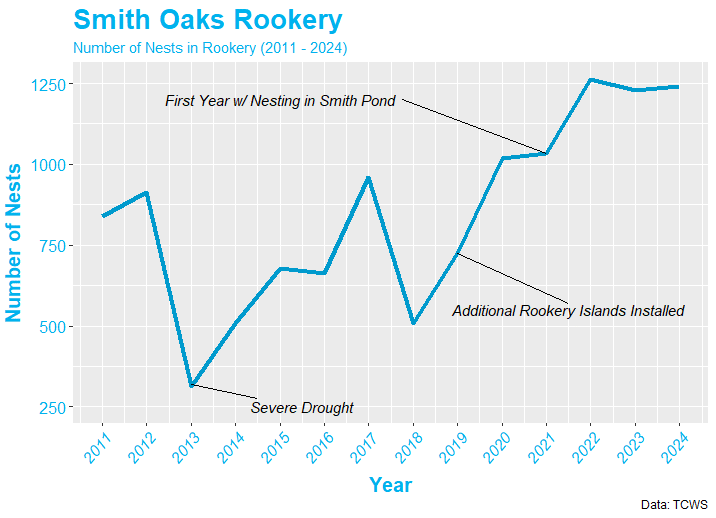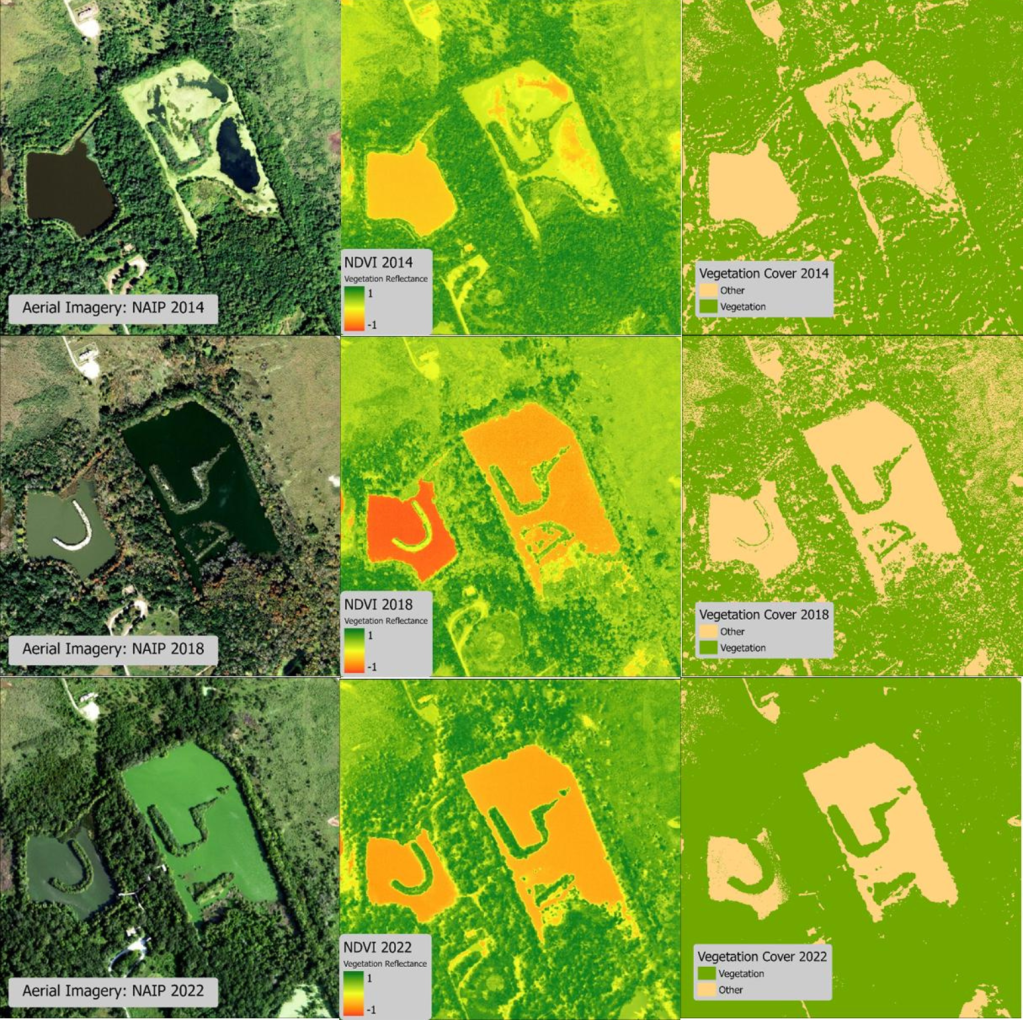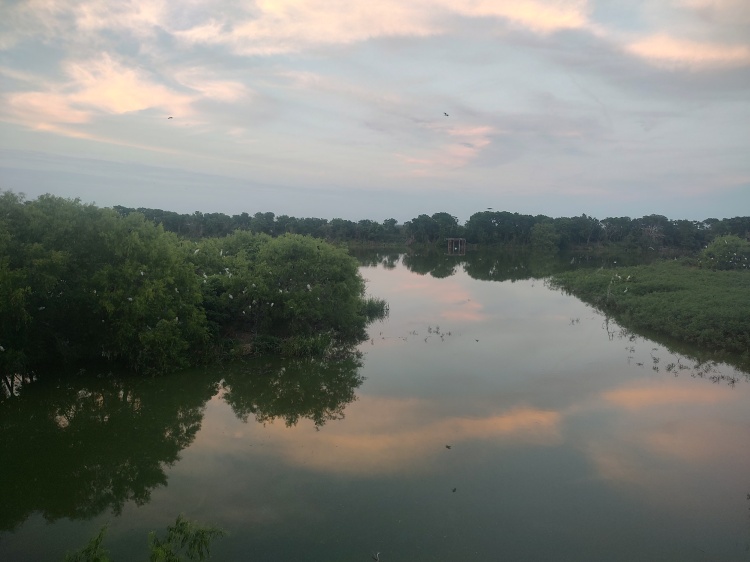By Schyler Brown, Wyatt Egelhoff (Conservation Specialists) & Pete Deichmann, Land Conservation Director, Houston Audubon
Six years ago, in May 2018, all that remained was a hastily assembled jumble of sticks sitting atop a 6’ by 8’ skeleton platform. Houston Audubon staff had installed the fenced platform in the hopes of attracting a few nesting pairs of Great Egrets or Roseate Spoonbills to a newly created island in Claybottom Pond. This was one of two new islands created at Smith Oaks Bird Sanctuary in early 2018 as part of a larger project to increase available nesting habitat for colonial nesting waterbirds and enhance the resiliency of our productive Rookery in High Island. In partnership with Ducks Unlimited and the National Fish and Wildlife Foundation, Houston Audubon created approximately 0.75 acres of additional island nesting habitat. We also addressed water level concerns after years of drought by tapping into an existing drainage ditch to divert water into the ponds, which helps maintain productivity. Areas of the existing rookery island near the shore were dredged deeper to maintain American Alligator patrols—this serves as a naturally occurring predator deterrent for nesting colonial waterbirds. The excess material was deposited on the existing island to further expand nesting habitat. Despite the new islands and artificial nesting structures, only one nesting attempt was made during that first breeding season. However, the pair of Great Egrets quickly abandoned their effort, leaving their nest to be looted by other birds.
By Spring 2019, several species had begun nesting on the new island in Claybottom Pond, and even more had started nesting in the flooded woodland area created on the southern end of the pond. The new island in Smith Pond had yet to see any nesting pairs. By the project’s end in 2020, Houston Audubon staff and volunteers had planted over 70 trees and installed over 250 sq. ft. of artificial nesting structures. Then came the spring of 2021; after three long growing seasons for the trees, a pioneering pair of Tricolored Herons defied convention and gave it a shot. They built their nest relatively low to the water in the cattails surrounding the island in Smith Pond, now called Cattail Island. They fledged three chicks that first year, marking the beginning of successful breeding on Cattail Island.

While many variables contribute to successful nesting seasons at Smith Oaks, vegetation is a crucial element. Each year since installing the islands and planting more native plants, we’ve found that the increased resiliency of the vegetation to storms and drought only serves to improve the number of successful breeding birds. While we are still developing a method for statistical analysis, we have the numbers to back up this hypothesis.
Figure 1 demonstrates the upward trend of nests in the rookeries, despite a severe drought in 2013 and a hurricane in 2017. Both disturbances led to fewer nests the following breeding season, but the overall rate of increase in nests is positive. There was an incredible rebound in nests from 2019 to 2023, particularly as vegetation grew on the new rookery in Claybottom Pond.
To demonstrate this point further, Figure 2 depicts maps derived from aerial imagery from 2014 to 2022. The left image is a color ortho-image, the middle depicts tree health, and the right shows land cover in two classes: vegetation or other. In 2014, vegetation cover was moderate, and vegetation health was recovering after rebounding from droughts in previous years. However, in 2018, after Hurricane Harvey wreaked havoc the previous year, the vegetation cover had decreased and vegetation health was less than optimal. Finally, after a few years of new plantings, a new rookery, and relatively few disturbances, vegetation rebounded in 2022, with over 80% of the islands being covered. When we take the vegetation cover and health and graph it alongside nest numbers (Figure 3), the connection between the two becomes clear: healthy vegetation means successful nesting rookery birds!


If you’ve visited the Smith Oaks Rookery in the past few years, you’ve probably noticed the changes in vegetation firsthand. The once sparsely vegetated portions of the island that offered incredible unobstructed views into the Rookery’s inner sanctum are now densely covered, requiring visitors to peer through a veil of fluttering leaves to witness newly hatched chicks and recent fledglings. It can be challenging, but fortunately each of our eight observation platforms offers different views into life at the Rookery. The dense vegetation is beneficial for breeding birds at the Rookery, and our ultimate conservation goal is to maintain an active breeding colony that functions at peak performance. As land stewards, it’s a delicate balance to strike between ensuring a pleasant visitor experience while also ensuring the birds have what they need to be successful.


Great work in bird conservation
LikeLiked by 1 person